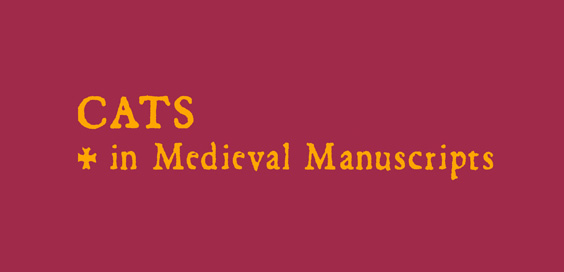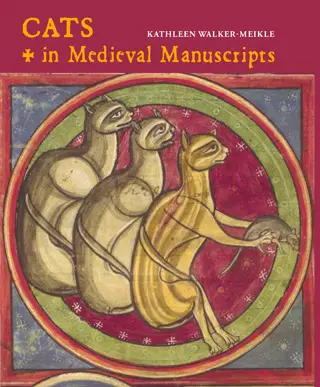Cats in Medieval Manuscripts by Kathleen Walker-Meikle – Review

By Victoria Holdsworth
It’s well-known that the cat has been revered in many cultures through the ages, but the 15th century manuscript spoiled by inky paw prints inside this fascinating opus reveals that the animal’s mischievousness has never waned.
Full of amusing and informative historical facts, Cats in Medieval Manuscripts is a cat lovers’ delight. It gives us insights into all walks of ancient cat life as well as looking at admirers of the feline form – even cat haters too. Treasured as pets, fearless mouse hunters, focus of many fables and religions and, of course, with links to witchcraft and magic, the cat’s historical life is rich, wild and fraught with danger.
For example, in Paris in 1268, domesticated cats were in grave danger of being captured by cat skinners, who would sell their furs. The feline was commonly sacrificed as a ritual scapegoat in popular celebrations across Europe. In Paris, on the eve of St. John the Baptist’s day (24th June, summer solstice), there was a citywide celebration involving cats. At the Place de la Greve, a site for executions, a pyre was erected and one to two dozen cats in bags were hung from it.
“Exquisitely detailed”
 More personally, a 14th century scribe found one of his manuscripts utterly ruined by kitty piddle from a four-legged visitor the evening before. The scribe ended up leaving the last page empty, all except for an etching of a cat, then wrote a curse to the creature with the following words: ‘Here is nothing missing, but a cat urinated on this during a certain night. Cursed be the pesty cat that urinated over this book during the night in Deventer and because of it many others [other cats] too. And beware well not to leave open books at night where cats can come.’
More personally, a 14th century scribe found one of his manuscripts utterly ruined by kitty piddle from a four-legged visitor the evening before. The scribe ended up leaving the last page empty, all except for an etching of a cat, then wrote a curse to the creature with the following words: ‘Here is nothing missing, but a cat urinated on this during a certain night. Cursed be the pesty cat that urinated over this book during the night in Deventer and because of it many others [other cats] too. And beware well not to leave open books at night where cats can come.’
How we all can sympathise.
In another section, one Albertus Magnus is revealed as anything but a cat lover. He wrote on the supposed medicinal qualities of cats where he believed that the flesh of a wild cat could be placed on the limbs of people suffering from gout and that the bile of a wild cat, if ingested, was good for facial pains or tics.
But throughout most of medieval history the book reveals that cat is mostly revered. An entry in the accounts of a manor house at Cuxham, Oxfordshire, in 1293-4, provides us with a rare example of special food being purchased for a cat. What do all cats love? Cheese.
The wife of Charles VI spent extravagantly on her pets, commissioning a collar for her pet squirrel which was embroidered with pearls. In her accounts of 1406, there is mention of bright green cloth being purchased to make a coverlet for her cat – a steal at sixteen shillings.
The artwork in the book comes from exquisitely detailed manuscripts, with many of the illustrations coming from the Bodleian Library collection. Even if you have no curiosity in cats, this book is a fascinating and revealing social documentation of history, and the societies of the time – albeit from a particularly feline perspective.
‘Cats in Medieval Manuscripts’ by Kathleen Walker-Meikle is published by the British Library, hardback, £12.99









